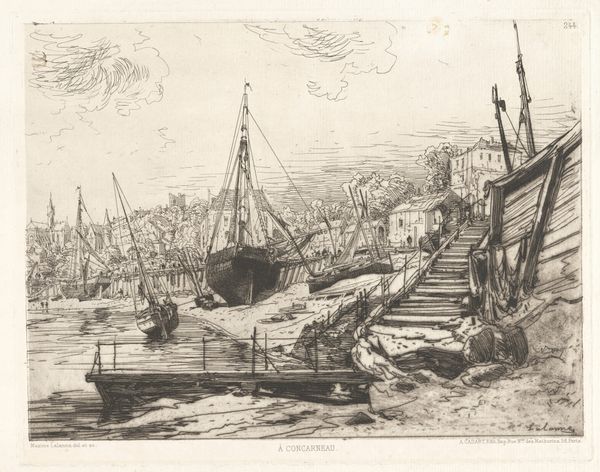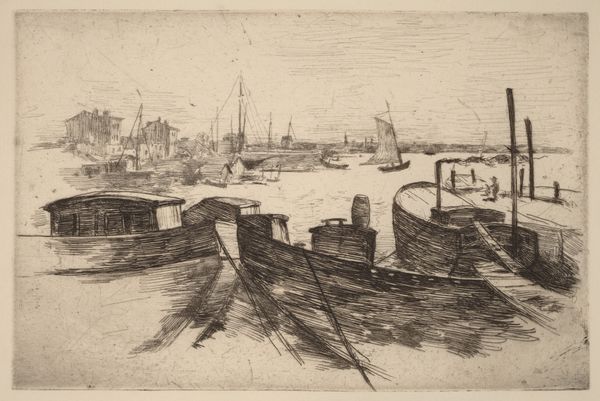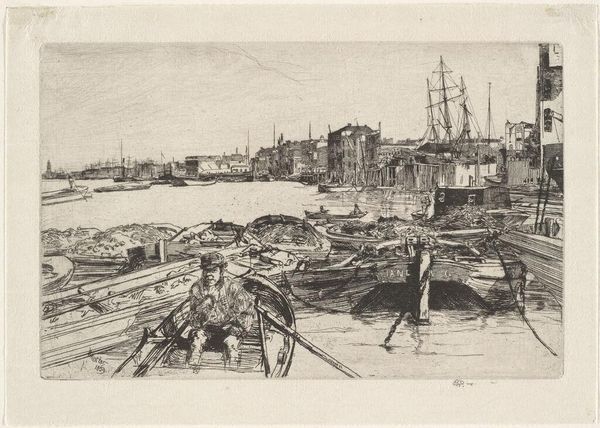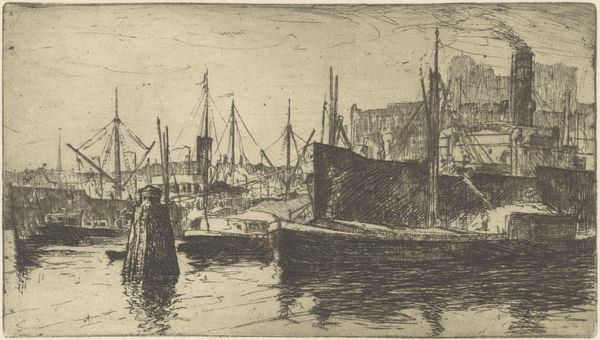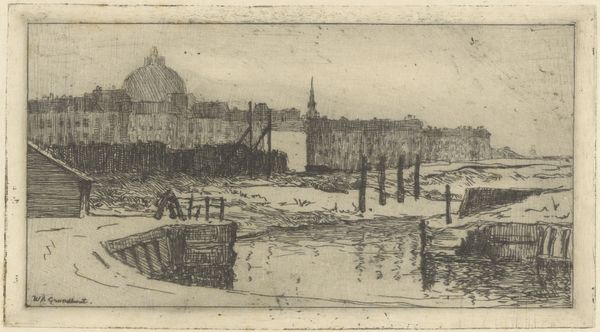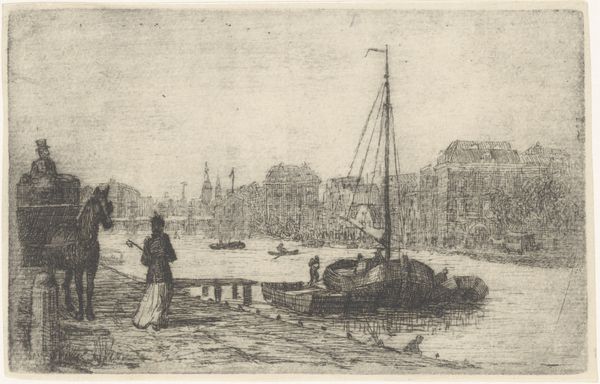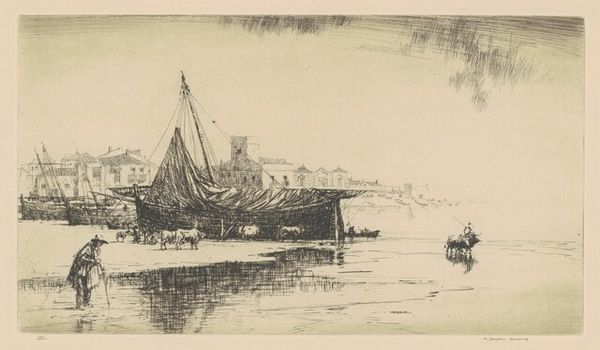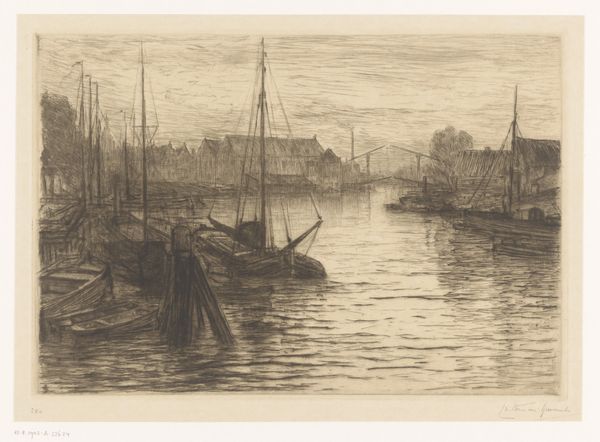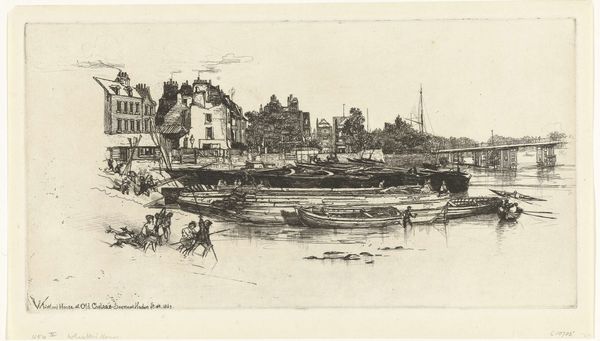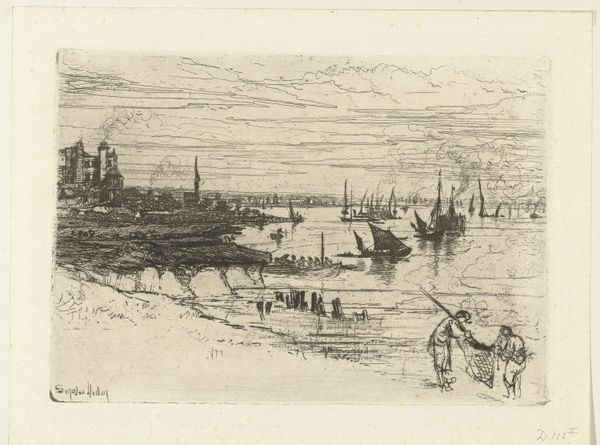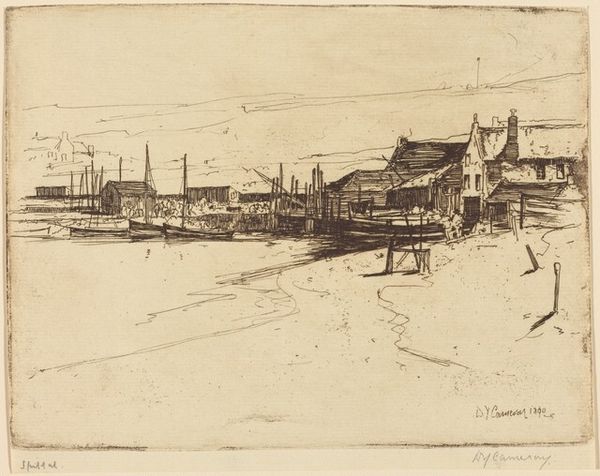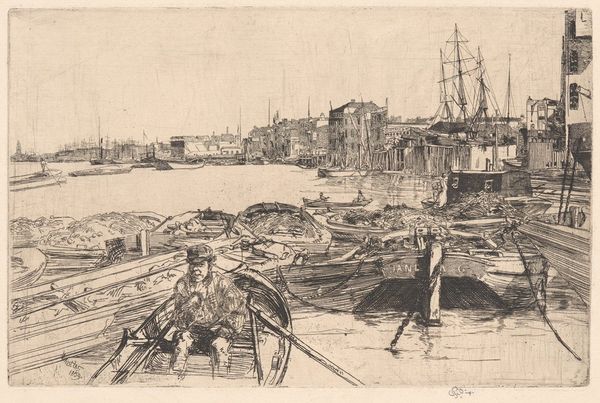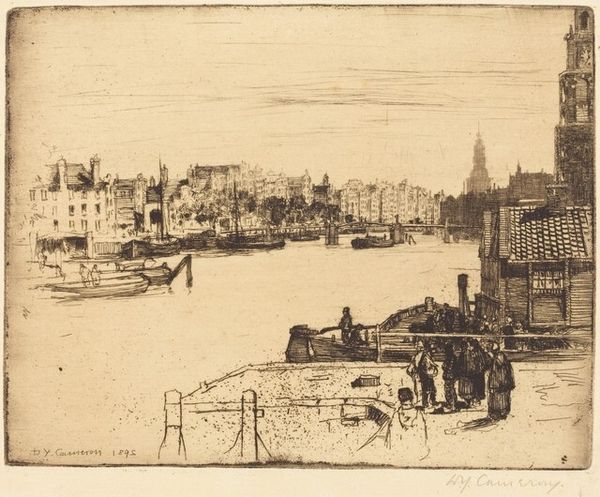
Dimensions: 118 × 269 mm (image/plate); 122 × 271 mm (sheet)
Copyright: Public Domain
Editor: So, this is Donald Shaw MacLaughlan's "Le Port de Boulogne-sur-Mer," created in 1902 using etching and ink on paper. I'm immediately struck by its busy-ness – all those little lines create such a detailed scene of a bustling harbor. How do you interpret this work? Curator: This piece, like many harbor scenes, holds potent symbolism relating to journeys, transitions, and the ebb and flow of human life. Note how MacLaughlan contrasts the grounded boats in the foreground with those sailing towards the horizon; do you perceive that there is a cultural memory about embarking on voyages and journeys towards different fates? Editor: That's interesting! I hadn't considered the 'journeys' aspect so literally, but the boats definitely make me think of arrivals and departures. What about the people? Curator: Observe how the figures working near the shore seem almost diminutive in comparison to the larger ships. This visual relationship carries psychological weight – portraying humanity's relationship with a force as immense as the sea, perhaps a humble co-existence or labor-oriented dominance of nature, a kind of psychological symbolism. Does this resonate with the other images that are part of this set? Editor: That makes sense. I was so focused on the technique, I overlooked that symbolic dynamic. There is a lot of activity, though, even amongst the 'smallness' of the human figures here. Curator: Indeed. Boulogne-sur-Mer itself carries historical significance, being a crucial port throughout European history. What continuities can we draw between MacLaughlan’s imagery and how port cities were viewed symbolically prior to, and after 1902? Editor: I’d say the cultural associations with trade, travel and possibly even the military, based on some cursory glances through related sets of art. Curator: A solid start! It highlights the layered readings we can unlock through an iconographic approach. I have also learned something new today: I need to look closer into the city’s place as a cross-section between trade, travel, and possible military activity throughout European history!
Comments
No comments
Be the first to comment and join the conversation on the ultimate creative platform.
